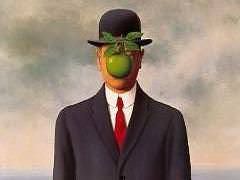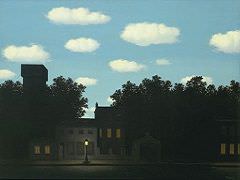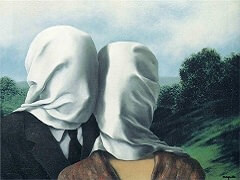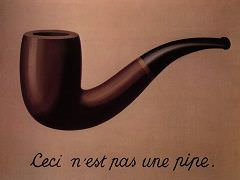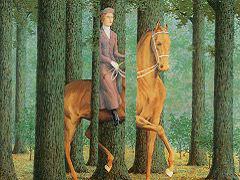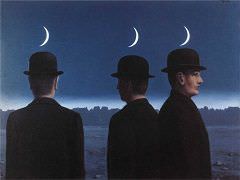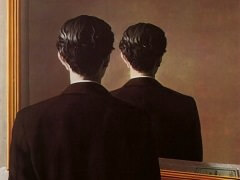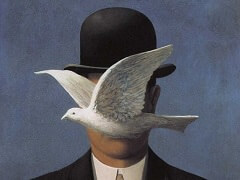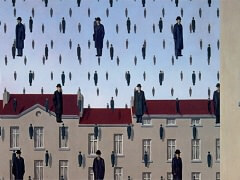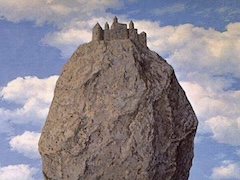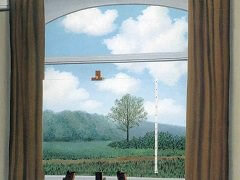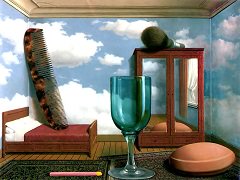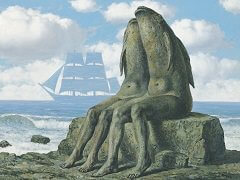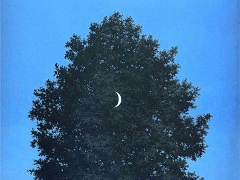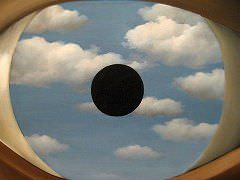Attempting the Impossible, 1928 by Rene Magritte
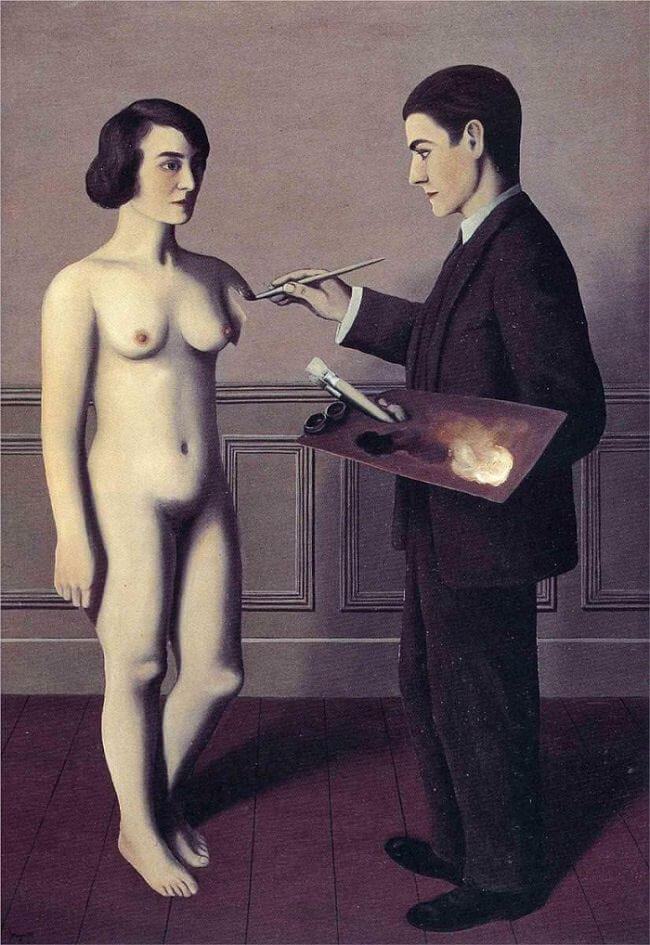
In Attempting the Impossible, Magritte shows himself painting a naked woman into thin air. Women and strong colors dominate many of his early works. In 1925, Magritte abandoned his experiments with abstraction and decided "only to paint objects with all their visible details". By displaying objects in strange situations he could "challenge the real world". Paradox and contrast became a recurring motif in Magritte's work. Two separate concepts are brought together and hybridized, taking certain pieces of each to create a new concept. In The Empire of Lights, 1954, a night landscape shines under a day lit sky.
Magritte was fond of illusions and problems of visual perception. How do you see things, and can you trust what you see? He used the symbols of windows, eyes, curtains, and pictures within pictures to explore these questions. Whereas his contemporary Salvador Dali painted hallucinatory dreamscapes of the mind, Magritte was content to stay within the reality of the visibly world. He places before us ordinary objects from our everyday lives and gave them new meaning - he forces us look at them from a new, slightly tilted, perspective. Magritte altered the viewer to the process of seeing.

